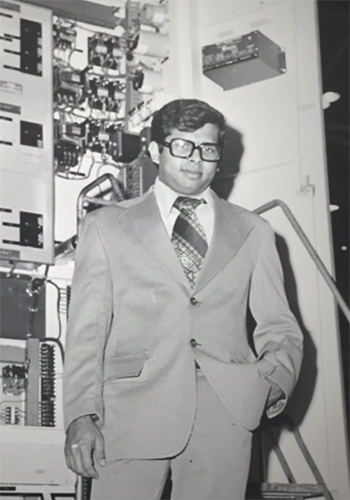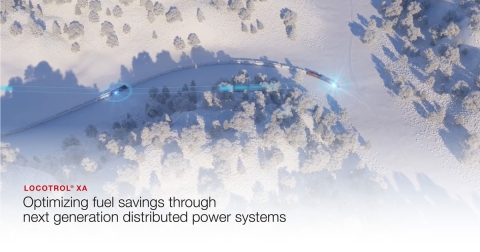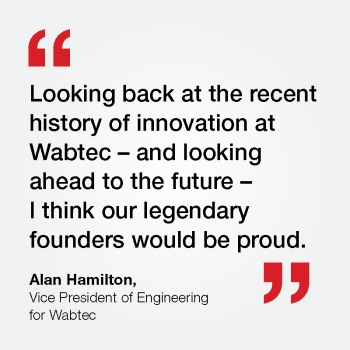
Wabtec’s Living Legacy of Engineering Innovation
Wabtec’s 155 years of innovation, a closer look at the recent breakthroughs that shaped the freight rail industry.
With 2024 marking Wabtec’s 155th anniversary, the temptation to trace the company’s excellent engineering genealogy back to its founding triumvirate of George Westinghouse, Thomas Edison, and Louis Faiveley, is admittedly strong.
Westinghouse - the first brake system in rail
Edison - the first electric locomotive
Faiveley - the first pantograph
Each of these technologies enabled Wabtec to revolutionize the rail industry.
But Wabtec didn’t become a global leader in rail technology by dwelling on its storied past. Rather, it has built on that rich foundation of innovation to continually improve and transform rail performance for its customers.
Simply put, innovation isn’t just a “legacy” at Wabtec – it’s a living legacy, one enhanced everyday by an engineering force of approximately 5,000 strong.
With this distinction in mind, let’s consider Wabtec’s recent history of disruptive innovation and engineering marvels in the freight rail industry.
Challenge: Increase tractive effort of heavy-haul trains
Innovation: The AC locomotive
In the 1990s, Wabtec was competing with EMD in the freight-locomotive market, and major railroads around the world were limited by the starting and continuous tractive effort capabilities from their DC locomotives.
That was about to change.

Wabtec engineers, led by the “Father of the AC Locomotive,” AJ Kumar (who surpassed George Westinghouse’s esteemed 361 patent count in 2022), took a “systems engineering” approach to creating a new kind of motor to rewrite the efficiency and haulage capabilities of the modern freight locomotive. The AC traction system was born.
“Our competitors at the time, chief among them EMD, were all focused on the same problem of delivering a locomotive with more tractive power for heavy-haul customers,” remembers Alan Hamilton, VP of Engineering at Wabtec. “Many of them tried to outsource the solution, but we kept it all in house. We took the opportunity to look at the challenge through the lens of the entire locomotive, the interconnection of the engine, traction system, and controls, that make a locomotive work, to create the architecture of a new kind of locomotive and optimize it specifically for the needs of our heavy-haul customers.”
This holistic systems-engineering approach worked wonders, resulting not just in a “working” AC locomotive, but a top-tier powerhouse built on optimized components, which provided advanced thermal capabilities (motor), adhesion capabilities (wheels), and individual axle control (power-electronics controls) to maximize tractive effort.
The engineering feats behind the individual components are numerous, as are those of the “vital organs” of the locomotive, but the real innovation is how these pieces worked together to create an optimized whole, a system that suddenly boosted tractive effort to a continuous rating of 166,000 lbs. – nearly a 60% increase over the prior DC locomotive. Suddenly, customers with a load that had required five DC locomotives to pull, could now use three AC locomotives instead, rewriting the rules of productivity, efficiency, and labor and maintenance costs in one fell swoop.
“Frankly, we, and the industry, never looked back. Wabtec got its AC locomotive architecture right from the start,” observes Hamilton. “This also set the stage for our successful locomotive modernization business, which to this day is converting DC locomotives to the AC platform.”
Wabtec’s AC advances also swept through the mining industry, ultimately resulting in the creation of the first-class Komatsu 930E truck, which became the industry standard throughout the 2000s with its increased haulage and reduced total lifecycle costs. No matter what companies are mining, Wabtec and its customers struck gold with the AC technology.
Challenge: Meet increasingly strict GHG emissions standards
Innovation: Deliver mandated compliance + fuel savings = The Evolution Series Engines
Beginning in the early 2000s, a succession of increasingly rigorous greenhouse gases (GHG) emissions standards (Tier 2 – Tier 4) impacted the design of freight locomotive engines. Again, while its competitors chose discrete fixes to keep in compliance, Wabtec applied a holistic, systems-engineering approach.
“Our competitors viewed the solution to the new emissions regime as an ‘engine’ problem; they tinkered with their existing engines and ‘detuned’ them to make them compliant,” says Hamilton. “The problem with that approach was that it resulted in decreased fuel economy. Wabtec engineers took a completely different approach. They reimagined the engine as a ‘power plant’ for the locomotive and found ways to reduce emissions, while increasing miles per gallon – a real breakthrough.”
This innovation introduced the Evolution Series engine to the rail industry. Wabtec engineers tested new ways of delivering fuel to the engine (and value to the customer), ultimately landing on a high-pressure common rail system that enabled fuel-injection pressure to be controlled independently of engine speed. Imaginative and practical improvements in overall engine design like this helped Wabtec not only meet its customers’ compliance needs but add value along the way in the form of newfound fuel efficiency, a major costs lever in rail.
And just as added compliance standards didn’t stop, neither did the creativity of Wabtec engineers. When Tier 4 emissions standards surfaced, requiring greater reductions in particulate matter and NOx, most locomotive manufacturers defaulted to an “aftertreatment” approach, introducing expensive, and rather clunky urea-based catalysts to their fuel and engine mix.
Not Wabtec. While its engineers did explore aftertreatment options, they pushed the envelope on their systems-engineering approach, innovating their way out of aftertreatment to provide not only a fully compliant but also a better optimized solution for the North American Railroads with the Evolution Series Tier 4 Locomotive. For Wabtec engineers, Tier 4 compliance provided the nudge, but performance and value creation remained the goal.
Wabtec’s Evolution Series Tier 4 Locomotive that delivers optimal efficiency and adhesion is the undisputed choice of North American railroads to fulfill their needs for new pulling power. With nearly 1,200 units delivered to date, Wabtec’s optimized systems engineering approach to product development continues to be validated by the market.

Challenge: Transform locomotive usage data into a customer performance advantage
Innovation: Wabtec control technology
While driving countless locomotive hardware innovations, Wabtec’s systems-engineering approach also led to a software revolution which is still transforming the industry. With advances in telemetry and on-board data capture, and as Wabtec literally rode the rails with its customers to better understand their needs and see “up close” how they operate, Wabtec engineers found ways to turn data into enhanced performance.
First and foremost among these software innovations is Trip Optimizer, an energy management and smart cruise control system for trains that considers terrain, train composition, speed restrictions, and operating conditions to calculate an optimum speed profile. Launched in 2009, Trip Optimizer recently notched an impressive milestone: one billion miles in operation, saving major railroads around the world over 750 million gallons of diesel while reducing emissions by up to 10 percent.

“Our many breakthroughs in control systems, from our best-in-class locomotive traction control (adhesion), engine fueling/timing and variable speed locomotive auxiliary control (emissions/efficiency), LOCOTROL (distributed power) and Air Brake Control (brakes) to Trip Optimizer show our engineers taking our system-engineering approach to the next level,” reflects Hamilton. “Trip Optimizer, for example, required a metaphorical leap of sorts, considering the entire train network as a system, and using inputs from that system to optimize a train’s use of energy.”
This type of software optimization, which encompasses advances in machine learning and predictive analytics, is anything but static. Today, for example, new battery locomotives, which can store power produced by braking, add another dynamic element to the energy management equation, opening new frontiers of fuel-efficiency.
Wabtec is building upon these innovations and looking to the future. By pioneering advancements in current signaling systems and network efficiency solutions, the company is striving to increase rail capacity to move more freight by train. Wabtec is working to reduce existing locomotive fleet emissions through fuel-efficiency solutions and testing renewable diesel and biodiesel. It also is leading the development of alternative propulsion technologies.

Wabtec already has developed the world’s first heavy-haul, 100% battery electric locomotive, the FLXdriveTM. The company will deliver the first commercial 7-megawatt hour FLXdrive later this year for line-haul operations in the demanding Pilbara region of western Australia.
Wabtec engineers also are exploring hydrogen as a fuel of the future for decarbonizing rail. The company is conducting collaborative research with Oak Ridge National Laboratory and Argonne National Laboratory to advance cutting-edge work on a hydrogen internal combustion engine. On a separate research track for a next-generation hydrogen locomotive, Wabtec is working with technology partners to develop locomotives capable of using hydrogen fuel cells as an alternative power-generating source.
“Looking back at the recent history of innovation at Wabtec – and looking ahead to the future – I think our legendary founders would be proud,” concludes Hamilton. “We have succeeded where our competitors have not by thinking, dreaming, and acting BIG and collaborating closely with our customers. Our systems-engineering approach has helped us aim higher and achieve more by ensuring our innovations work together in harmony, just as an orchestra must play together to make great music.”